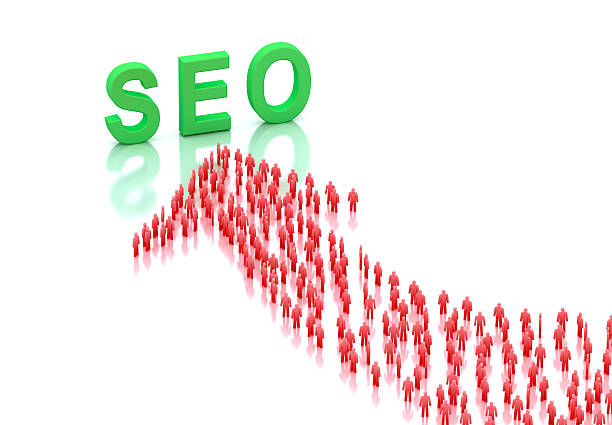Search engine optimization (SEO) remains one of the greatest avenues of growth of the online stores, especially those that are built on eCommerce platforms, including Shopify. In 2025, the SEO monitoring will be not about the number of keywords or backlinks, but the efficiency of your entire online environment in respect of the search performance, user experience, and turnover.
Either you are an experienced store owner or you are on the verge of launching your eCommerce business, understanding how to track the SEO is the difference between a gradually growing business and a stagnant sale. This roadmap is a division of the most pressing strategies, measurements, and tools that you must follow to monitor your Shopify SEO success in 2025.
Why Tracking SEO Performance Matters in 2025
SEO is not a one time thing, it is a continuous process. Search engines are more intelligent, customers are more critical and the competition is stiff. You can monitor your progress in SEO by tracking your level of performance regularly and:
- Identify growth opportunities: Find what’s working — and double down on it.
- Detect issues early: Spot indexing problems, ranking drops, or slow-loading pages before they affect sales.
- Measure ROI: Determine whether your SEO investments are actually paying off.
- Understand your audience: Learn how visitors discover your products and what drives them to buy.
In 2025, tracking SEO performance means using data-driven insights to refine your strategy continuously, not just reacting when rankings change.
Step 1: Establish Clear SEO Goals
Before you start tracking metrics, define what success looks like for your online store. Your SEO goals should align with your overall business objectives. Examples include:
- Increasing organic traffic by 30% in six months.
- Boosting conversions from organic search by 15%.
- Ranking on the first page for a set of high-value keywords.
- Reducing bounce rates on product pages by 10%.
Having measurable goals gives you direction and helps you evaluate progress accurately.
Step 2: Identify the Key Shopify SEO Metrics to Track
SEO success is built on a combination of visibility, engagement, and performance. Let’s break down the most important metrics every Shopify store owner should track in 2025.
1. Organic Traffic
Organic traffic is the traffic that is generated by the search results that are unpaid. It is a first-hand display of your presence in search engines. Keep an eye on the total organic traffic, however, it is also possible to split it into:
- Landing pages: Identify which product or collection pages attract the most visitors.
- Location: See where your customers are coming from.
- Device type: Mobile optimization is essential as most shoppers browse via smartphones.
A steady increase in organic traffic typically indicates effective SEO practices.
2. Keyword Rankings
Performance of keywords will make you understand about the position of your pages in a search result. Target key words which create revenue and not traffic.
Pay attention to:
- Primary keywords: Your main product or niche-related terms.
- Long-tail keywords: Specific phrases that often convert better.
- Search intent: Make sure your content matches what users are actually looking for.
Keyword fluctuations are normal, but consistent drops may signal technical issues or stronger competitors.
3. Click-Through Rate (CTR)
CTR is referred to as the amount of times people access your site when they have seen it in the search results. The CTR could be poor due to the poor meta titles or descriptions. By the year 2025, the generated snippets by AI and the categorized data will be more contributing to the choice of what information should be clicked on.
4. Bounce Rate and Dwell Time
When the user moves out of your site immediately after clicking on it, the search engines can conclude that it was the bad experience. To determine the relevance and usability of your content, check your bouncing and dwell time (the amount of time the visitors spend on your page).
Enhance actions on fast loading websites, brief product specification, and interactivity.
5. Conversion Rate from Organic Search
The last indicator of SEO is traffic but not as a traffic indicator. Track the amount of organic users that take the actions that they intend to complete such as adding to cart or purchasing a product.
Optimization of the product descriptions, pathways and relief of check out friction are some of the best activities in improving the rate of organic conversion.
6. Page Speed and Core Web Vitals
Google has been striving on user experience metrics, the so-called Core Web Vitals, which is the page load time, interactivity, and visual stability. Delays in websites fall against the ranking and the user becomes frustrated.
Performance check with performance monitoring tools, performance problems and optimization of images, scripts and code can be traced with the aid of performance monitoring tools and the performance can be delivered to the user in less time.
7. Backlinks and Domain Authority
The presence of good backlinks will be a recommendation to the credibility of your store. Keep track of the volume of referring sites, the authority of the sites that are referencing and the progress of the links with time. The spammy or other redundant links are not an option since they will cause more damage than good to your SEO performance.
Step 3: Use Analytics Tools to Measure Shopify SEO
To accurately track your SEO performance, you’ll need the right analytics setup. Integrate your Shopify store with data platforms that provide visibility into traffic, rankings, and user behavior.
Here’s what to focus on when choosing tools or dashboards:
- Traffic analysis: Understand where your visitors come from and which pages they engage with most.
- Keyword tracking: Monitor keyword performance across devices and locations.
- Technical SEO insights: Detect crawl errors, indexing problems, or speed issues.
- Conversion tracking: Measure the impact of SEO on sales and sign-ups.
In 2025, many analytics tools use AI to predict trends and automate reporting — making it easier to focus on strategy rather than manual data collection.
Step 4: Monitor Technical SEO Health
Even the most compelling content won’t perform if technical SEO issues exist. Regularly audit your store to ensure it’s search-engine friendly. Check for:
- Broken links or 404 errors.
- Duplicate meta titles or descriptions.
- Slow-loading product images.
- Incorrect use of canonical tags.
- Proper mobile responsiveness.
Running a monthly SEO health check helps you maintain consistent visibility and prevents ranking losses due to technical problems.
Step 5: Evaluate User Experience and On-Page SEO
Directly, user experience (UX) influences SEO position and conversion. Take care of making your store user-friendly, attractive, and desktop and mobile-friendly.
Focus on:
- Clear headings and scannable content.
- Descriptive, keyword-rich product titles.
- Internal linking between related products or collections.
- Fast checkout processes.
Step 6: Report and Adjust Regularly
SEO is not static. Set a regular reporting schedule — weekly or monthly — to review key metrics and adjust your strategy.
Your reports should answer questions like:
- Which keywords are driving the most conversions?
- Are product pages ranking higher than last month?
- Did organic traffic increase after publishing new content?
- What technical improvements made the biggest difference?
Use this data to refine your content strategy, target new keywords, or optimize underperforming pages.
Final Thoughts: Building a Sustainable SEO Strategy in 2025
It is not only how many positions can your Shopify store take in search engines to measure the level of performance in these platforms in 2025, but how many people find your brand on the Internet. Having the right metrics in mind and technical health, as well as habitual optimization of the content, it can be achieved to have a viable SEO strategy that will bring both visibility and sales.
Remember: reached SEO is not reached within a day. It is the result of constant practice, lifelong learning, and wise decision-making through data. Being constantly monitored and










